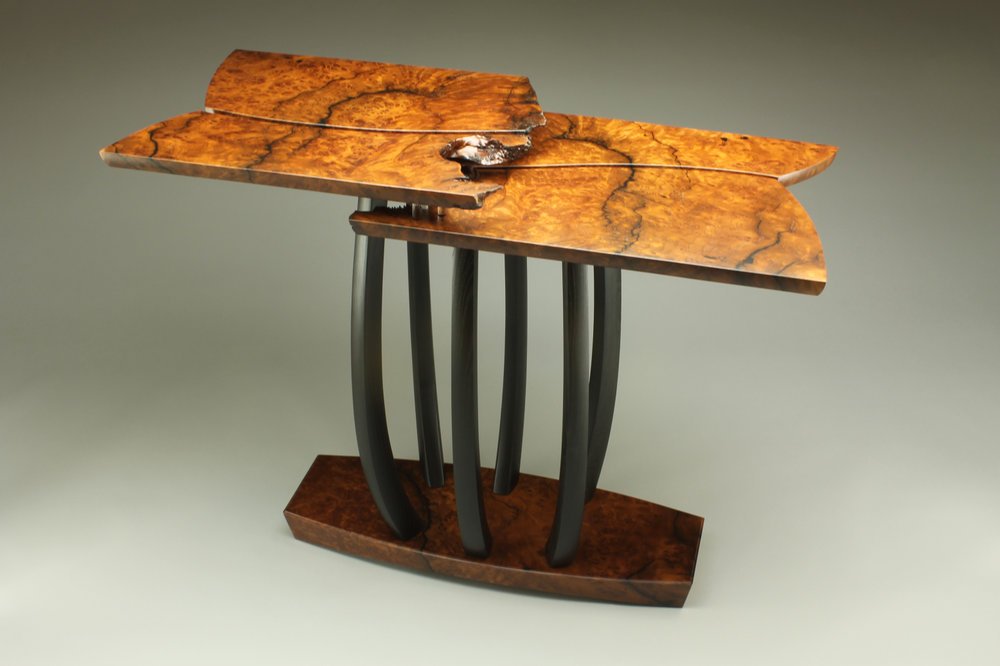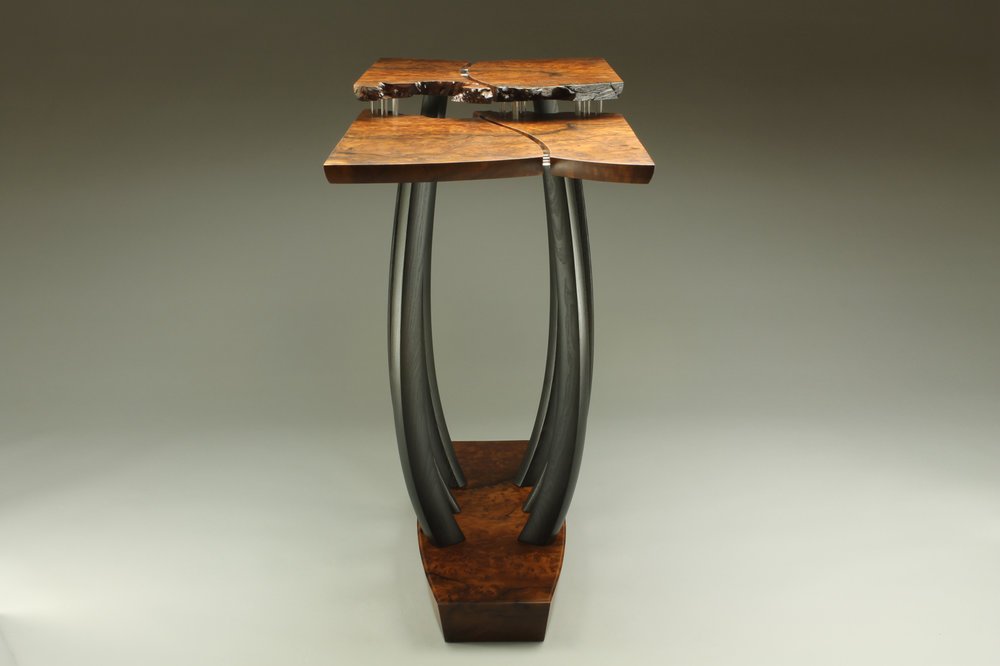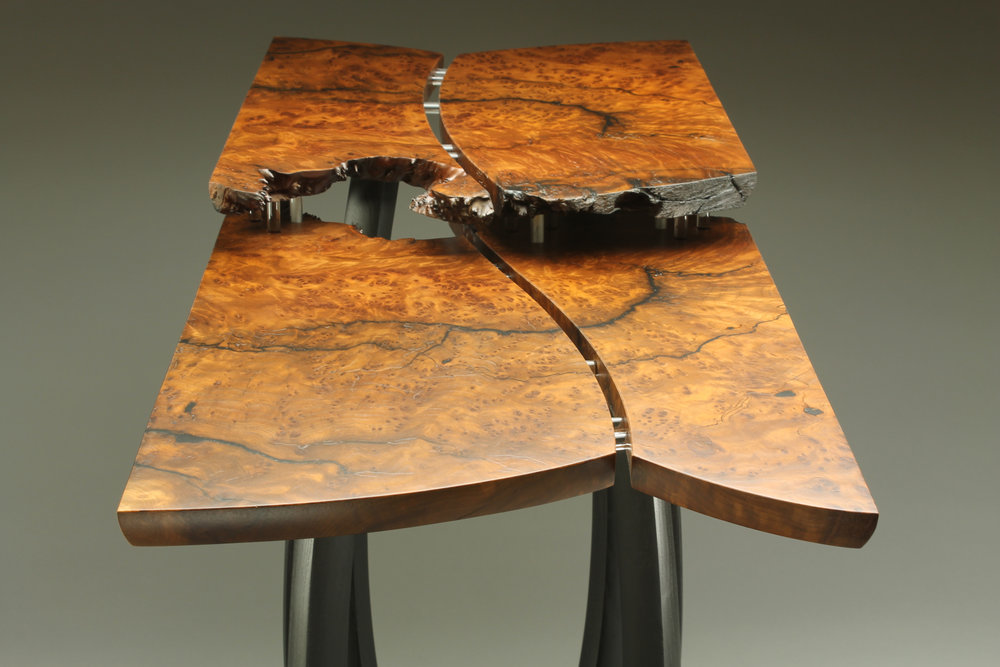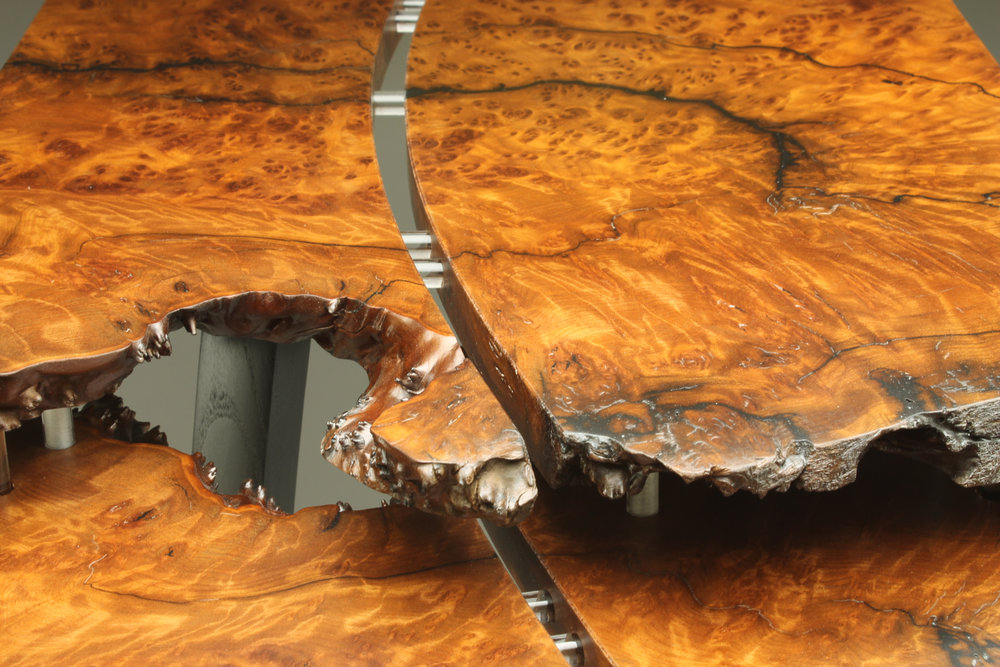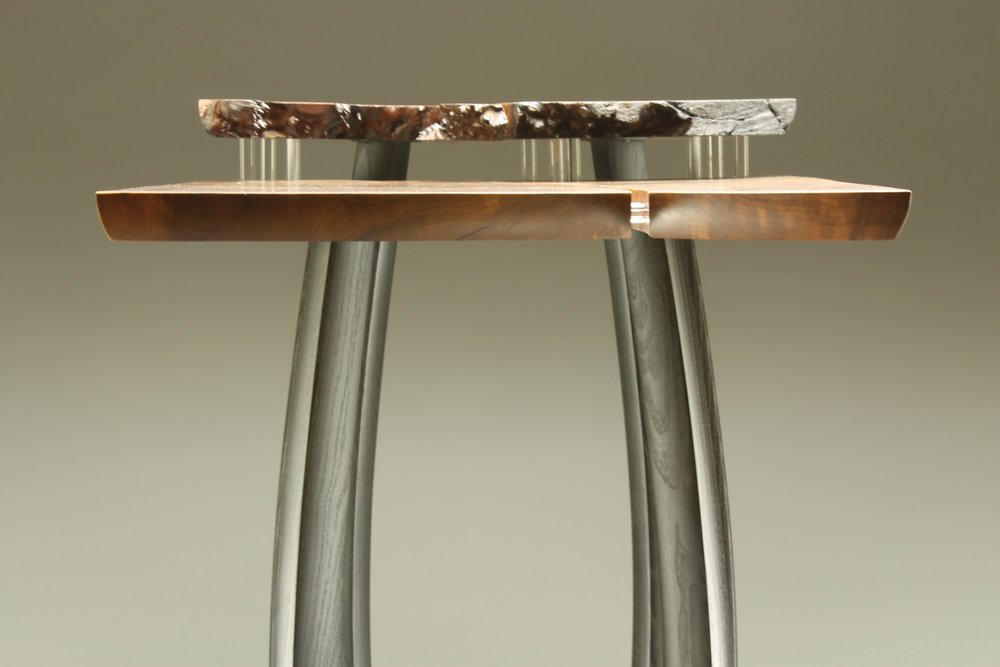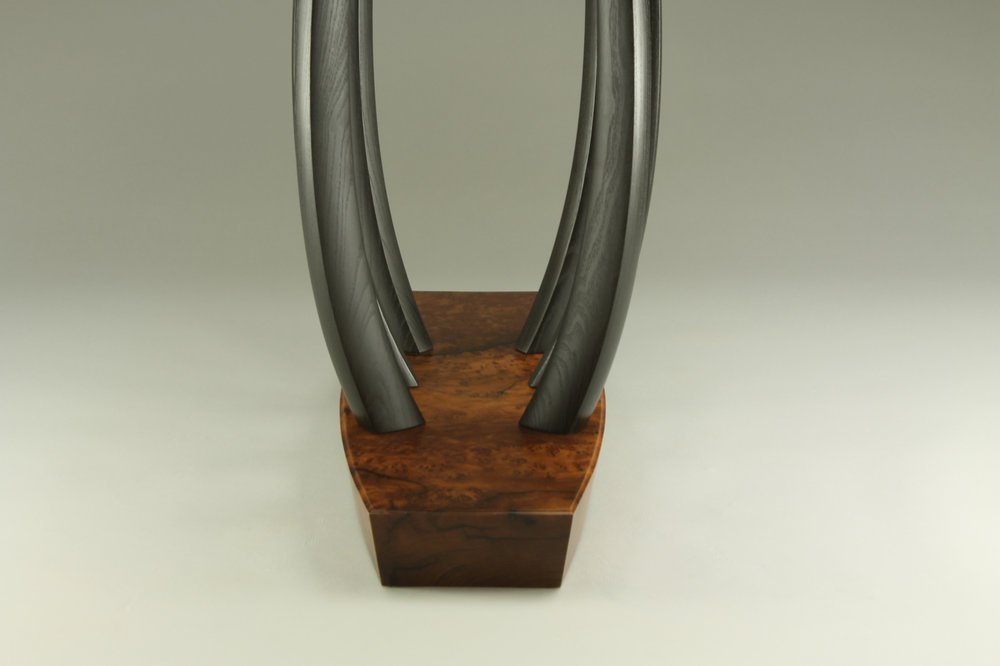This table came about at the request of a client who asked me to make him a table with some wood he recently had milled. The wood was a mystery burl from a veneer mill that had gone out of business about a decade before. My best guess is that it is some type of redwood. The ultimate design was the byproduct of a mistake. I started the design process in my usual way — sketching ideas then taking my favorites and making quarter-sized models so that I could start to visualize the piece in 3D. I had settled on a design and was starting to look at the wood that I wanted to use when I realized it wasn’t long enough to create the table I had designed. Oops. (Note to self… know the dimensions of your raw material before you start to design.) Ok, so back to the drawing board. I scaled the table down making the top as big as the lumber would allow. The new proportions were not pleasing so I knew I needed to keep designing. As I continued to think about ways to use the material I had, I stumbled upon the idea of a split-level table. This design is much more engaging than my original idea and I would never have come up with it had I not been forced into it because of raw material limitations.
As I started looking through the slabs that would eventually become the top I was really intrigued by a portion of live edge. As I debarked it I was delighted to find all of these great little protrusions that were the starts of baby branches. I decided this was a feature I definitely needed to keep. In fact, I did my best to maintain all of the features of that end of the boards, including the chainsaw marks. I felt that these beauty marks told the story of this wood’s previous life. I chose consecutive slabs out of the burl so that the grain, cracks and other features would be as similar as possible. I book-matched the slabs and overlapped the live edge portions, creating an engaging negative space between the upper and lower shelves of the top.
This gorgeous wood was a challenge to work with. It was very dry, had numerous cracks running through it and was quite fragile. If I just looked at it crossways parts would break off! But those black cracks were so beautiful and were part of the story of this wood. In order to work with it I knew that I would need to stabilize it first so I decided to fill the cracks with black epoxy. Aesthetically it matched the original cracks and structurally it gave me the stability I needed.
Another challenge of this piece was the serpentine curve down the center. I wanted the curves to match perfectly when you looked through the space of the upper shelf to the lower shelf. I was able to get the look I was after by a combination of careful layout to registration marks and a single router jig that was used to create the space between the pieces for both the upper and lower shelves.
I love to play with the illusion of parts hovering away from each other making you wonder just how the table is holding itself together. For this table I decided to use clear acrylic dowel to connect the parts because I wanted the dowels to ‘disappear’ as much as possible. Acrylic dowel is also used to connect the upper and lower shelves.
The leg shape is a new one for me and I designed it specifically for this project. I wanted the table to have more visual weight towards the bottom and I wanted to create a volume of space inside the legs. They are made of mulberry that was rescued from English Landing Park in Parkville, Missouri. I finished the legs by ebonizing them. This is a process that causes a chemical reaction in the wood to make it turn black, much the way a rusty nail leaves a black mark around it in old wood. I used a product from the leather tanning industry to add extra tannins to the wood. Then I took a solution of vinegar in which I dissolved steel wool and applied this to the wood. The vinegar solution reacted with the tannic acid solution and caused the wood to turn a lovely, deep black color. I love this particular finish because it allows you to see the wood grain through it.
I honestly feel that this is my best work to-date. It met all of my requirements as a maker: it challenged me, I learned new techniques and I feel like I have created an engaging piece sculptural furniture that encourages exploration.


